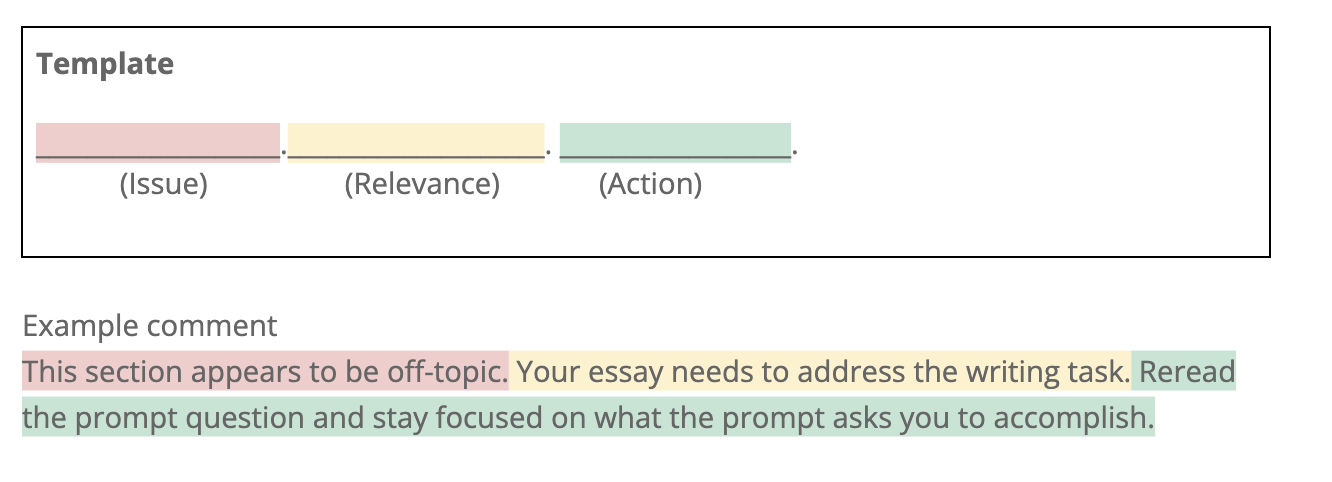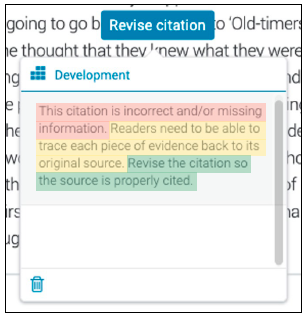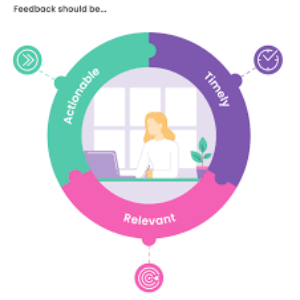As educators, we have always believed that feedback is critical to student learning; however, studies investigating the actual impact of feedback in education were lacking until the last few decades. Research conducted by educational researchers, such as Dr. John Hattie (Professor of Education and Director of the Visible Learning Labs, University of Auckland, New Zealand) have helped define feedback and how it can be used to improve classroom learning. In particular, in a review of educational research, Hattie and Timperley (2007) present and discuss three forms of feedback: Where am I going? How am I going? and Where to next?
In an effort to explore which form of feedback is most likely to enhance student essays, myself along with three other veteran educators at Turnitin partnered with Dr. John Hattie in a study titled, "Feedback That Leads to Improvement in Student Essays: Testing the Hypothesis that ‘Where to Next’ Feedback is Most Powerful." The 2021 study harnessed data from high school and university assignments submitted to Turnitin Feedback Studio. The anonymized data included 3,204 essays that were submitted, received feedback, and resubmitted for final scores.
The major finding from this study endorses the importance of “Where to next?” feedback and demonstrates that it leads to the greatest impact on student improvement between drafts. No matter whether it was more general or quite specific, students appeared to respond to “Where to next?” feedback. Additionally, while the students received feedback from a teacher via a computer-based tool, across the board students were able to successfully decode and apply the feedback.
Implementing “Where to next?” feedback in Turnitin Feedback StudioEducators devote countless hours to providing feedback to students, all with a goal of helping them grow. “Where to next?” feedback helps students understand what steps to take next to reach the learning goal. If the research proves that this feedback is the feedback that is most likely to achieve that growth, it only makes sense that teachers would be best served by leveraging this power. Why not concentrate efforts on incorporating this form of feedback while students are working on their next essay?
For “Where to next?” feedback to most effectively impact student growth, it should be applied formatively and follow a set of guidelines.
Apply “Where to next?” feedback formatively“Where to next?” feedback should be offered on an ongoing basis, allowing students the opportunity to improve and reach their learning goals. Plan on leaving this type of feedback when students can submit at least one draft and a resubmission. If possible, try to provide multiple opportunities for students to review feedback and revise their writing. With the incorporation of actionable feedback and opportunities for revision, students are more likely to revise their writing based on the feedback.
For educators using Turnitin Feedback Studio, create a revision assignment to allow for multiple drafts of an assignment so students can read and incorporate feedback between drafts.
Write “Where to next?” feedback following these guidelinesAs the study suggests (Hattie et al., 2021), “Where to next?” feedback should be scaffolded with feedback related to “Where am I going?” (the goal) and “How am I going?” (progress towards the goal). Writing “Where to next?” feedback as a comment on a student paper requires educators to include components of the previous mentioned forms of feedback.
Written as a comment, we suggest that “Where to next?” feedback includes three essential components:
- Issue: Highlight and clearly describe the specific issue related to the writing task.
- Relevance: Align feedback explicitly to the stated expectations of the assignment (i.e. rubric).
- Action: Provide the learner with their “next steps,” appropriately guiding the work, but not giving away the answer.
Components may show up in a different order than presented in the template and/or may be combined.

When written as a QuickMark comment in Turnitin Feedback Studio, "Where to Next?" feedback may look like this:

For educators using Turnitin Feedback Studio, write “Where to next” comments as inline comments, bubble comments, or QuickMark comments.
Additional tips for using “Where to next?” feedbackEnhance the ability for students to understand your feedback by applying a rubric and aligning feedback to criteria in the rubric.
Add a rubric to clearly communicate task expectations
Task expectations can be clearly stated using a rubric. Design and share rubrics with students while explaining the assignment. The best rubrics distinctly map out the expectations for the task, at various levels and across the traits or aspects of the work that will be assessed. Try to relate the "Where to next?" feedback to the success criteria states in the rubric for the assignment so students know "Where am I going?"
For educators using Turnitin Feedback Studio, connect an existing rubric to your assignment, modify an existing rubric in your account, or create a rubric on your own.
Align feedback to criteria in rubrics
Help students further understand your “Where to next?” feedback by mapping it to a rubric. Students will have a clearer understanding of the criteria for success and will more easily be able to understand and apply “Where to next?” feedback.
For educators using Turnitin Feedback Studio, tie feedback to criteria by assigning criteria to bubble comments and QuickMark comments.
In summaryResearch supports that “Where to next?” feedback delivered by teachers via a computer-aided system, such as Turnitin Feedback Studio, enhances student performance over time. With “Where to next?” feedback, students have a clear understanding of the action(s) required by them to advance progress. We know how much time and energy educators dedicate to crafting effective feedback. Incorporate “Where to next?” feedback as a proven method for making a measurable impact on student growth.
Works cited
Hattie, J., Crivelli, J., Van Gompel, K., West-Smith, P., & Wike, K. (2021, May). Feedback That Leads to Improvement in Student Essays: Testing the Hypothesis that “Where to Next” Feedback is Most Powerful. In Frontiers in Education (Vol. 6, p. 182). Frontiers.
Hattie, J., and Timperley, H. (2007). The Power of Feedback. Rev. Educ. Res. 77 (1), 81– 112. doi:10.3102/003465430298487
Turnitin (2022). The powerful direction of “Where to next?” feedback. Turnitin, LLC. Retrieved on February 28, 2022 from https://www.turnitin.com/resources/where-to-next-feedback






